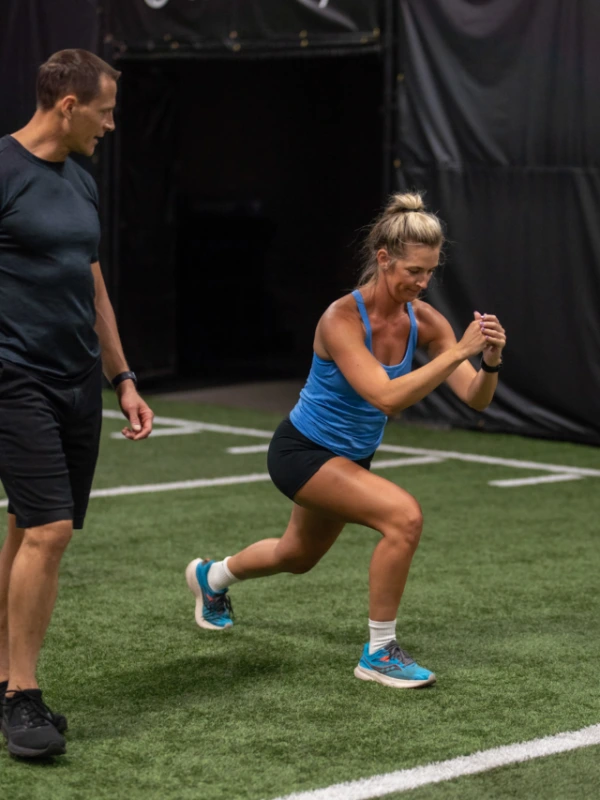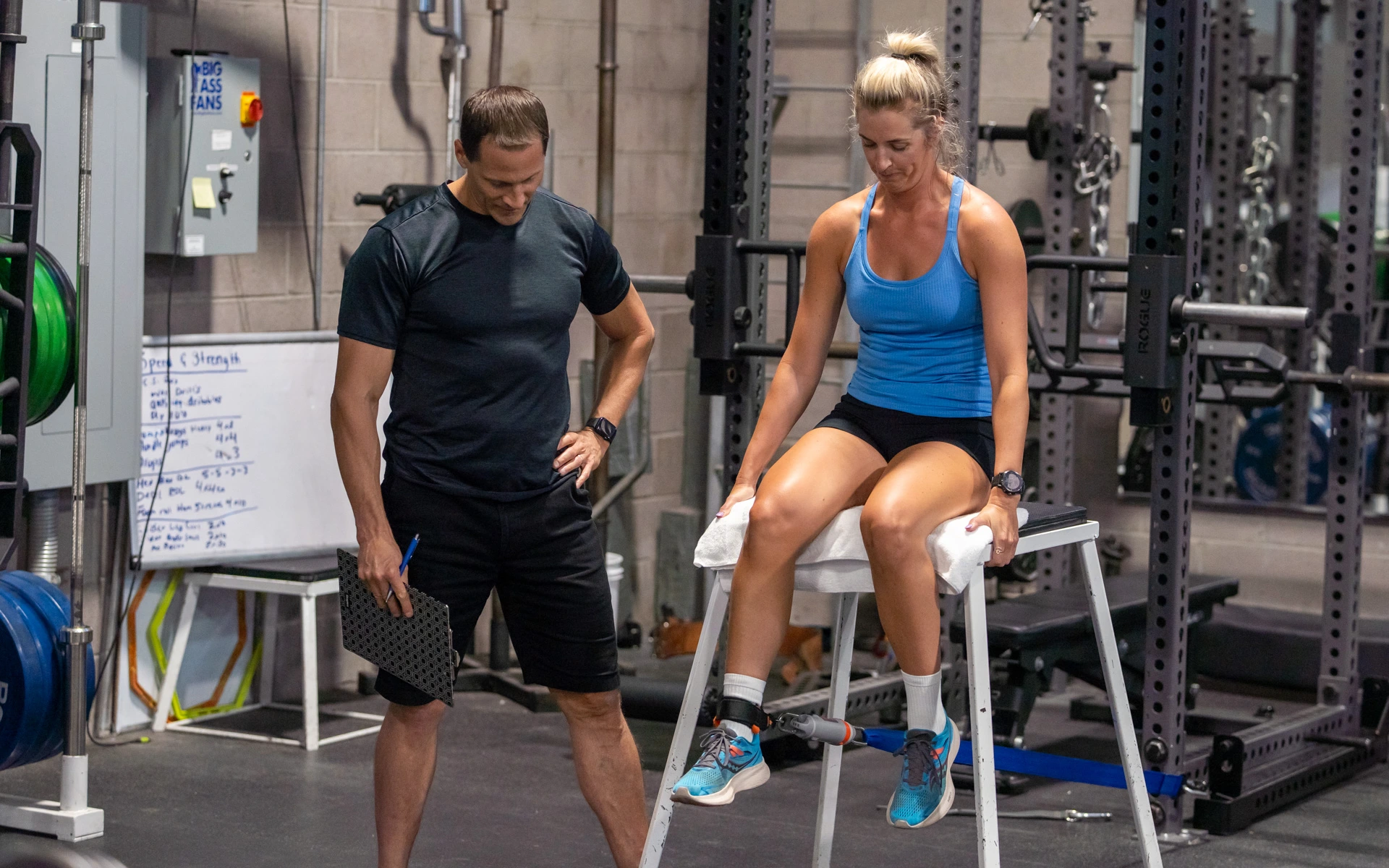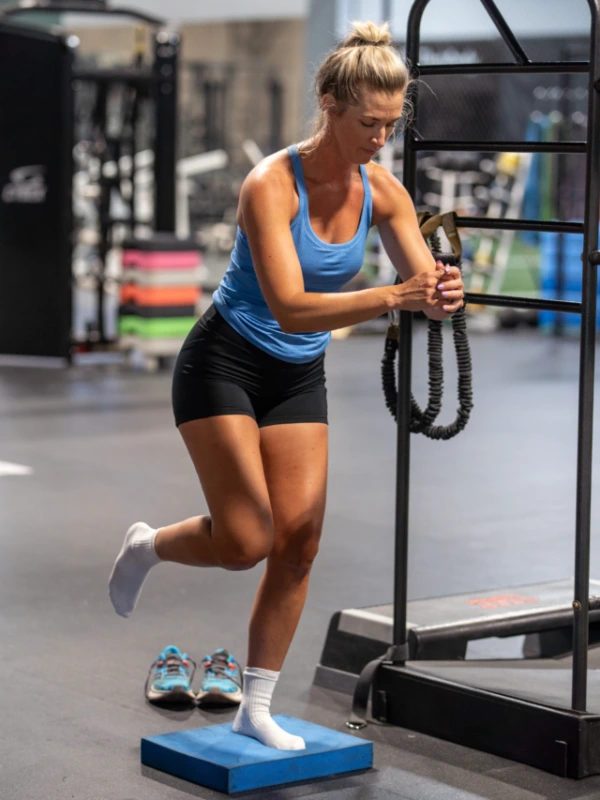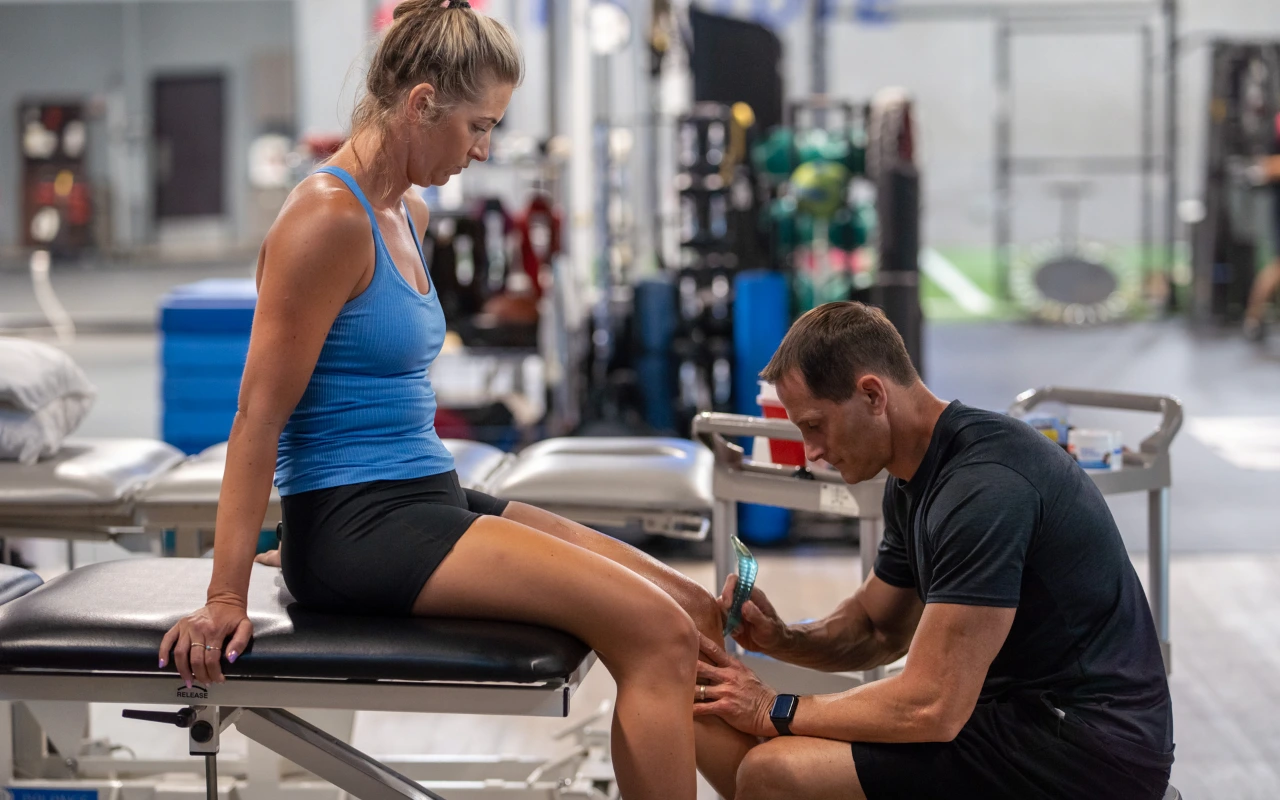By: Torrey Foster, PT, DPT, OCS, FAFS, CSCS
When people think about ACL injuries, they usually think about surgery and rehab, but reducing the risk of an ACL injury is just as important. Not just for younger athletes, but for every athlete. Why? Because ACL recovery is a long road. It’s not like an ankle sprain where you’re back in a few weeks. Following an ACL reconstruction, you’re looking at nine to twelve months before you can safely, comfortably, and confidently return to your sport.
If you’re in high school or college, that’s an entire season and a major part of your career. If you’re a professional athlete, time is money, and it affects the whole team. That’s why prevention matters so much. It’s about safeguarding the investment of time, effort, and opportunity athletes put into their sport.
Most ACL Injuries Happen Without Contact
A lot of people are surprised to learn that 80% of ACL injuries are non-contact. The knee often gets caught between the hip and ankle, and if there’s a mobility or strength deficit, the risk of knee injury skyrockets. Most athletes aren’t training through all three planes of motion or in ways that build functional strength and stability. That’s why we start with athlete screens. A Spooner physical therapist measures mobility, strength, and multidirectional control of an athlete to identify deficits and opportunities to fine-tune training. What’s weak? What needs attention? Our screens help pinpoint individual or team-wide needs so we can create personalized strategies to reduce injury risk.
Think of these screenings as performance check-ups. Just like:
- a yearly physical with your physician
- an oil change for your vehicle
- rotating your tires every few thousand miles
A preseason screen can help catch issues early before they lead to injury and provide guidance to improve performance on the field or court.
We can’t guarantee anything, but we can mitigate risk. The hardest part is getting buy-in. If someone isn’t in pain, prevention is easy to ignore. But when coaches, parents, and athletic trainers understand the importance, they can help athletes to prioritize it.

The Mental Side of ACL Rehab
There’s a huge mental component to ACL rehab. You’re no longer competing in your sport; you’re observing and fighting to get back. That identity shift is tough. We help athletes understand that rehab requires the same kind of energy and commitment as practice or competition.
This process requires:
- education
- collaboration
- encouragement
Since athletes are not always in the clinic, we provide home exercise programs and stay connected through the use of technology. We’re not just therapists. We’re partners in the recovery journey.

You Have to Earn the Right to Progress
Our return-to-sport program isn’t generic, it’s structured and data-driven. Athletes must earn the right to move from one phase to the next.
Our phases include:
- Early rehab: education, symptom reduction, knee range of motion, weightbearing progression, gait retraining
- Neuromuscular control
- Impact preparation
- Jogging and initial impact: slow jogging, jumping (two-foot takeoff to two-foot landing)
- Running and single leg multidirectional control: hopping (one foot takeoff to same foot land)
- Sprinting and preprogrammed changes of direction
- Non-spontaneous and conscious
- Athletes must prove ability before agility – not just rely on time based clearance
- Agility and return to sport readiness
- Spontaneous, instantaneous and subconscious reactions to changing conditions, while effectively completing functional tasks within an optimal period of time.
The goal is to move from conscious, rehearsed movements to automatic, game-ready reactions.
Tracking Progress with Real Data
We use tools like dynamometers to measure strength across different muscle groups. Before an athlete is cleared, their surgical side must reach at least 90% strength of their non-surgical side. If the strength isn’t there, the risk of reinjury rises.
We also adjust for training variables to strengthen the entire kinetic chain:
- Plane of motion – direction of movement
- Environment – where the exercise takes place (clinic floor, turf, shoes on or off, etc.)
- Resistance (Load) – how much force or weight is involved
- Duration – how long the movement or hold is performed
- Speed (Rate) – how quickly the movement is executed
- Position – body position during the task (standing, prone, supine, etc.)
- Action – the movement type (pushing, pulling, squatting, etc.)
- Driver – which limb (arm or leg) facilitates the movement
- Distance – how far the body or limb moves
- Height – such as the height of a reach, box, or jump
We tailor training variables to fit each athlete’s unique needs. If progress slows, we adjust strategies to ensure continuous improvement.
It’s a constant process of assessing, adjusting, and guiding. We show athletes where they are, what they’ve accomplished, and what still needs to be done.

Recovery Isn’t Linear. And It Isn’t Easy
People see professional athletes return quickly and assume that’s normal. But what they don’t see is the months of intense, consistent work behind the scenes. Recovery from an ACL injury is a marathon, not a sprint. And that’s why reinjury rates are high if the process isn’t done right the first time.
Common barriers to recovery include:
- Time
- Financial constraints
- Insurance limitations
- Motivation
From Rehab to Performance
You’re either training or you’re detraining. There’s no in-between. One reason athletes may get re-injured is that they stop using the strategies that helped them recover.
That’s why Spooner offers a seamless transition from rehab to performance. As discharge approaches, we can coordinate with our Head Sports Performance Coach, Ernie Atkins to create a structured performance plan. Our entire team strives to restore comfort, capability, and confidence for long-term success.
Learn more about Spooner’s ACL Injury Rehabilitation program.
Don’t wait for an injury to take you out of the game. Schedule a performance screen or ACL consultation with a Spooner physical therapist today and take the first step toward safer, stronger performance.

